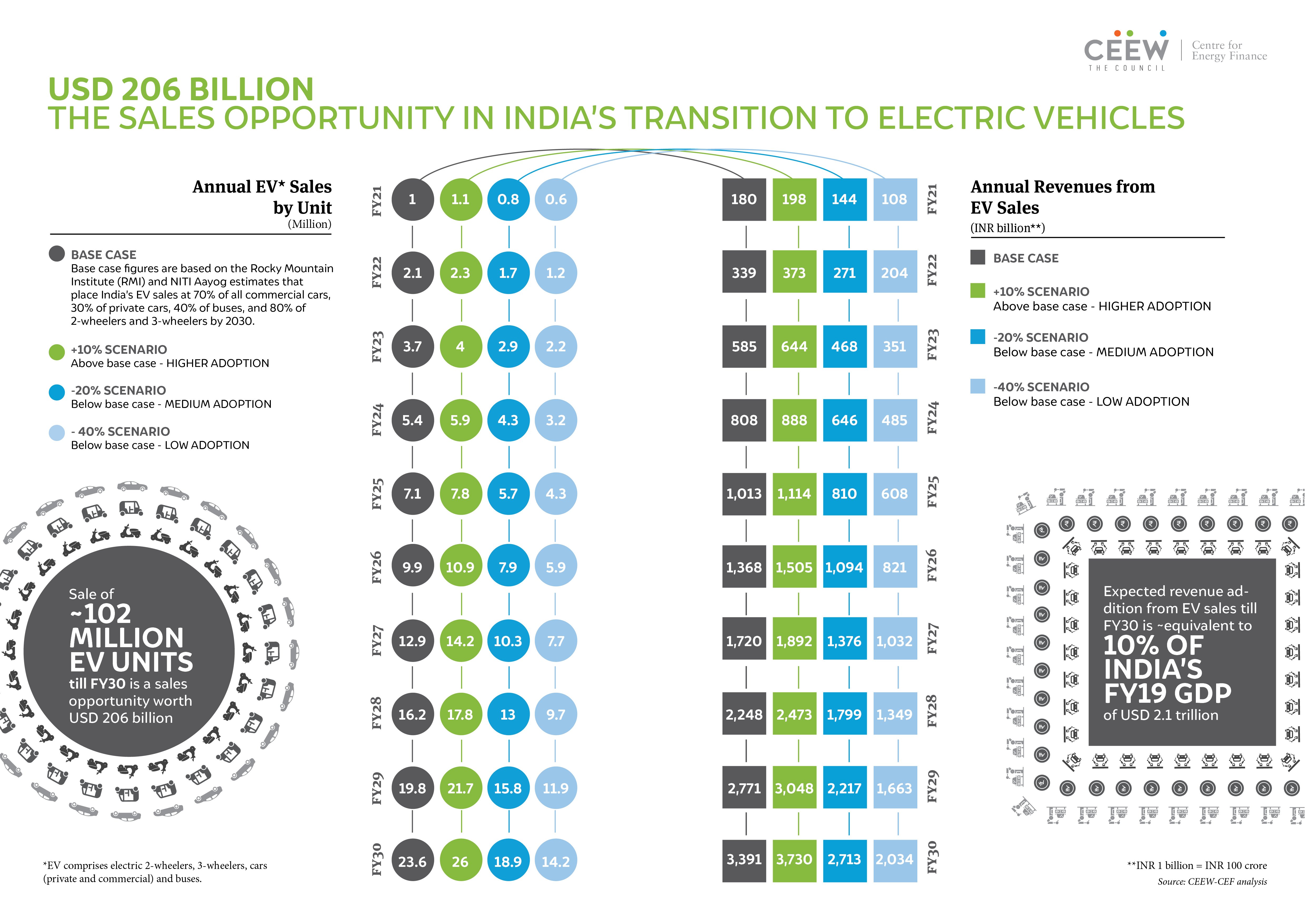Overview
The study assesses segment-wise electric vehicle (EV) sales, battery requirements, public charging infrastructure necessary, and the investments needed until 2030 to support India’s EV transition. In addition to the 2030 target, the study models three transition scenarios. Further, it identifies the barriers to the investment flow and solutions to accelerate the flow of investments in the sector.
India’s 2030 vision for electric mobility presented by NITI Aayog is a mammoth market opportunity. Realising this vision can make India’s EV sector an important driver of its post-COVID-19 economic recovery. It can generate jobs and economic value across the value chain, including in the existing industries and creating new sectors. The study aims to bridge the research gap in the form of a robust analysis needed to estimate the size of the opportunity and the quantum of investment – both public and private – required to realise this vision.
Key findings
- India’s 2030 vision of e-mobility (i.e. 70 per cent of all commercial cars, 30 per cent of private cars, 40 per cent of buses, and 80 per cent of two-wheeler (2W) and three-wheeler (3W) sales to be electric by 2030) translates into 102 million EVs.
- Under the high adoption scenario, which is 10 per cent above the vision, EVs are expected to account for 43 per cent of the total new vehicle sales. This could go down to 23 per cent in the case of low adoption scenario, which is 40 per cent below the vision
How will the EV sales grow under different scenarios?

Source: CEEW-CEF analysis
- 158 GWh of battery demand by FY30: Commercial cars are expected to lead the replacement demand for batteries and 2-wheelers to lead battery demand based on new vehicle sales.
- 102 million EVs by FY30 would need deployment of 2.9 million public chargers. Slow chargers are expected to account for 71 per cent of the total public chargers’ deployment by FY30
- EV sales present an investment opportunity of INR 12,39,800 crore (USD 177 billion) for OEMs in vehicle production, INR 20,600 crore (USD 2.9 billion) for the deployment of charging infrastructure, INR 85,900 crore (USD 12.3 billion) in battery manufacturing and INR 14,42, 400 crore (USD 206 billion) revenue opportunity from end-consumers.

Identifying barriers and solutions to the investment flow in EV sector
Investments required for India’s mobility transition is enormous and mobilising the investments to finance OEMs, battery manufacturers, charging stations, and end consumers will require targeted and systemic policy support and shifts in market design, business models, and financial structuring.
Key recommendations to address barriers in accessing capital
Source: CEEW-CEF analysis


